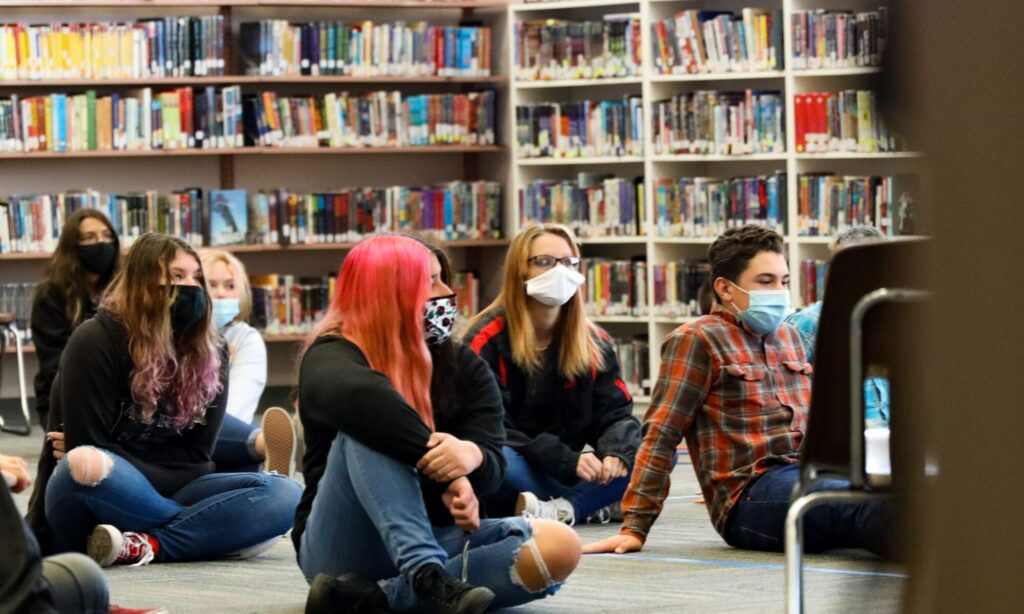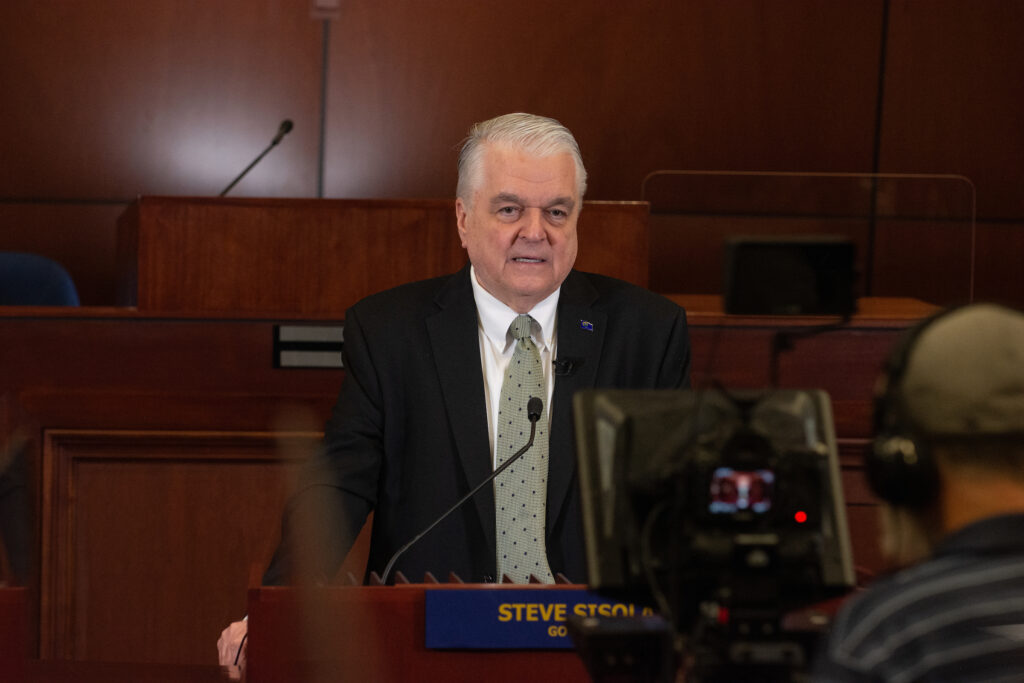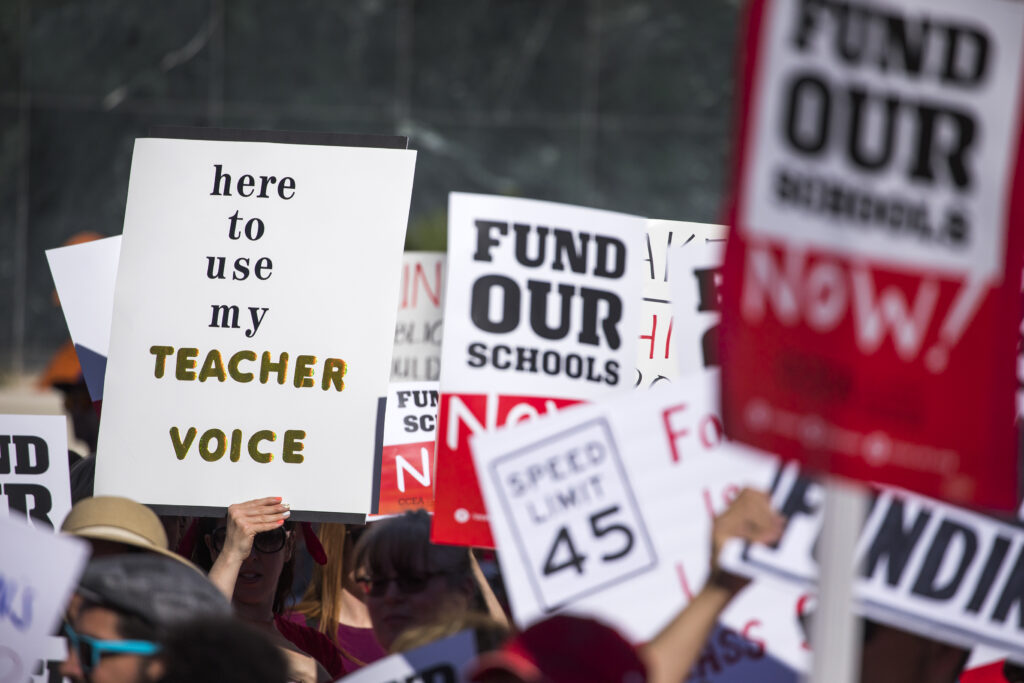Pandemic budget woes dim optimism about major funding infusion for K-12 education

By Jackie Valley
https://thenevadaindependent.com
The quest to dramatically boost Nevada’s K-12 school funding resembles a marathon.
The journey has included studies, legislative hearings, legal battles, a commission and more — all understandable, if not expected, mile markers given the heavy lift. Even the staunchest advocates weren’t under the illusion it could happen overnight.
Many argued the state first needed a new funding mechanism. That occurred in the waning hours of the 2019 legislative session when lawmakers passed Senate Bill 543, which created a new funding formula. Critics were quick to point out, though, that it didn’t include any new revenue for education.
“It’s two separate things: One is how do you allocate the money?” said Democratic state Sen. Mo Denis, who chairs the Senate Education Committee. “You have got to get that right first, and then we come back and talk about how we’re going to raise revenue for education.”
So, as quickly as the doors shut on one Legislature, all eyes turned toward the next. Would Nevada — one of the worst states for public education funding — finally turn the corner during the 2021 legislative session?
The word “optimal” became the backbone of these aspirational conversations. A newly formed Commission on School Funding started examining what would constitute adequate versus optimal per-pupil funding, with an eye toward achieving the latter within a decade.
Then the pandemic hit. Schooling changed. Businesses temporarily closed. State revenue cratered. In the process, the school funding discussions adopted a more measured tone.
Now, restoring and preserving funding has emerged as the immediate concern.
“I’m not going to lie: The Legislature is in a really tough spot,” said Amanda Morgan, legal director of Educate Nevada Now, an equity-focused organization that has for years been leading the charge to improve school funding. “I could be pounding my fist wanting increases for K-12 education right now, but I don’t know if increases in funding is necessarily going to be the discussion.”
But that doesn’t mean the drumbeat for school-related tax reforms has stopped.
***

Gov. Steve Sisolak on Monday unveiled his proposed $8.68 billion budget for the upcoming biennium. It represents a roughly 2 percent cut compared with his budget as presented in 2019.
Notably, the governor’s statement accompanying his budget said he is “committed to remaining flexible.”
The amount the governor proposes contributing to core education spending is down about $50 million from the levels the Legislature had approved in 2019 for the current biennium, before having to make adjustments for how the pandemic slashed revenues.
Given the state’s transition to a new funding formula, it makes calculating budget differences difficult because it’s not an apples-to-apples comparison. That said, Class Size Reduction and Read By Grade 3 are among the programs that would see sizable funding cuts under the governor’s proposal.
The good news: Nevada is expected to receive $450 million in pandemic relief funds from the federal government. That should lessen the blow to the education budget, but the question is to what extent. The federal funding will come with certain parameters, meaning its uses likely will be limited to addressing certain COVID-19-related issues.
It all adds up to more uncertainty than usual for school districts crafting their own budgets.
“It’s significantly more blind than we have been in the past,” said Jason Goudie, the chief financial officer for the Clark County School District.
The large district, which has remained in remote-learning mode since March, has saved some money given its empty schools — for instance, $5 million to $6 million in diesel expenses for buses. But, like other districts around the state and nation, it also saw an enrollment dip and expects rising costs associated with COVID-19 learning loss.
The district projected student enrollment to be about 318,000 this year. Instead, it fell to about 305,000, largely because of family decisions tied to the pandemic. The sudden dip, Goudie said, isn’t all bad: The majority of schools were bursting at the seams with students before the pandemic.
“While there’s some revenue loss, it actually allows us to probably optimize operations a little better and essentially take away some of the overcrowding as well,” he said.
The Washoe County School District, which has provided some in-person instruction this year, saw a 3.4 percent enrollment decline, or about 2,100 students, said Mark Mathers, the district’s chief financial officer. That translated to a $12.5 million dent in the district’s general fund.
The bulk of the enrollment drop came in the form of kindergarteners whose families decided to keep them home, which is allowed under Nevada law. Mathers expects many to return for the 2021-2022 academic year, though variables such as the COVID-19 vaccine rollout could affect families’ schooling decisions.
“We want to be conservative,” he said. “We don’t want to assume growth from the current year, so we’re just going to model flat enrollment and hopefully we’re wrong and we see a return to 64,000 (students).”
Enrollment fluctuations aren’t the only immediate monetary concern for districts, though. They’re also facing the potentially monumental task of bridging academic deficits caused by pandemic learning disruptions. The extent of the learning loss is unknown, but early indicators suggest at least some academic slides. That leaves school districts grappling with how to remediate students. Tutors? Summer school? Extended hours?
And doing so comes with a yet-to-be-determined price tag.
“For those kids who have gone through this, I can’t overstate the significance of the issue,” Mathers said.
The Reno-area district received just over $9 million in the first round of federal coronavirus relief funding, which Mathers said “didn’t go very far,” though local jurisdictions used some of their CARES Act money to support school needs. The City of Reno, for instance, kicked in $2.5 million for student devices out of its $47 million allocation.
School districts are expected to receive substantially larger amounts through this second round of pandemic relief funding. But school district CFOs caution viewing that money as the fix to state education cuts given the strings that will be attached.
“I think these are unprecedented times as to, you know, federal funding coming into school districts,” Goudie said. “And how they’re being used is a challenge for everybody.”
***

Another looming challenge for school districts is implementing the state’s new K-12 funding formula.
SB543 overhauled the state’s decades-old fund model by creating the Pupil-Centered Funding Plan. The new formula sweeps more than 80 different funding streams into one giant education funding pot, which, in theory, should offer more transparency. It also ushers in a weighted distribution method that lets money flow to students based on their needs.
The legislation, passed at the very end of the 2019 session, stood up the Commission on School Funding to examine several key aspects, such as:
- Cost adjustments for rural and urban school districts
- What the “weights” for various student groups should be
- Definition of optimal funding and how to eventually pay for it
Under the new funding plan, some districts will receive less funding, while others stand to gain. But districts will be held harmless during the transition, meaning they won’t receive any less money than they did in the fiscal year that ended in mid-2020.
“The Pupil-Centered Funding plan isn’t about winners or losers,” said Karlene McCormick-Lee, who chairs the commission. “It’s about trying to reach a point that is fair and equitable and transparent and has accountability for funding all students’ education in the state of Nevada.”
The governor’s budget proposal calls for a phased-in approach that would only pull state revenue into the new funding plan for the upcoming biennium. Local revenue would be included in the 2023-2025 biennium.
Moving forward in any fashion has already upset some groups, though. The Nevada State Education Association has strongly opposed implementing the new funding model without an additional revenue infusion; otherwise, the statewide teachers’ union contends it’s simply a rearranging of existing money. The union submitted a letter Friday to the Legislative Commission calling it “completely irresponsible” to transition to the new funding formula right now.
“While NSEA was encouraged the Governor recommended a phased implementation of the new plan, we believe the only responsible course of action is to delay SB543 until after the pandemic, while we are able to work together on optimal funding and the revenue plan to get us there,” union leaders wrote.
Others disagree. The CFOs of the Washoe, Clark and White Pine county school districts support taking the beginning steps of implementation. So does the Clark County Education Association.
The Commission on School Funding, which has been studying revenue streams, expects to make a recommendation to the Legislature about how to pay for whatever is deemed “optimal” base funding — a figure likely several thousand dollars higher than the existing average basic support of $6,218 per pupil. The weights for students learning English as a second language, at risk of not graduating or identified as gifted and talented would be layered on top of that base funding.
McCormick-Lee said the commission seems to be leaning toward finding ways to augment existing tax revenue streams rather than adding a new one. For instance, she pointed to states that have a sales tax on services.
“If you have someone repair your air conditioner, they’re going to charge you sales tax on the parts, but they’re also going to charge you sales tax on the service,” she said as an example. “In Nevada, that doesn’t happen.”
Several tax proposals are already on the table. Initiative petitions backed by the Clark County Education Association that would increase the gaming and sales tax rates garnered enough signatures last year to make it on the 2022 ballot. Plus, during the second special session last year, state lawmakers passed a trio of potential constitutional amendments that would increase mining taxes.
When lawmakers convene in Carson City this year, they’ll be constitutionally obligated to consider the union tax proposals. But the CCEA-backed tax proposals appear dead in the water. High-ranking state lawmakers who participated in an IndyTalks event Thursday said they don’t plan to support the gaming or sales tax increases.
“I don’t believe that those measures are the best way to go forward,” Assembly Speaker Jason Frierson said during the panel discussion. “I think you’re talking about sales tax in a state that already has one of the highest sales tax (rates) in the country, and you’re talking about room tax when our rooms are empty.”
CCEA’s executive director, John Vellardita, has framed the ballot initiatives as a bargaining chip to discuss tax reforms that would uplift education. The union has asked the commission to consider property tax reforms as it mulls revenue streams.
“This would be a missed opportunity and a tremendous setback if we walk out of this session and nothing is done on (SB543),” he said.
The Clark County Black Caucus, meanwhile, has focused its recent lobbying efforts around how the new weighted funding formula will work. The organization wants to see a weight added for the least proficient students, similar to how Senate Bill 178 awarded an extra $1,200 per student to help those in the lowest quartile of academic achievement.
Caucus Chair Yvette Williams said SB178 was a more equitable distribution method than categorical funding linked to Zoom and Victory schools, which serve large populations of English language learners and students from low-income families, respectively.
SB178 funds served double the number of students receiving free or reduced-price lunch than in Zoom and Victory schools combined, according to a report produced by the Clark County Black Caucus. Additionally, SB178 helped twice as many Black students than in Zoom and Victory schools combined, and it served roughly 44 percent more Hispanic students than Zoom schools in the 2019-2020 academic year.
The new weighted funding formula, Williams said, “should be based on kids’ proficiency. It should be based on their success and what their needs are.”
The new Pupil-Centered Funding Plan will transition away from the categorical funding streams for the Zoom, Victory and SB178 programs by creating weights to support student subgroups.
Sisolak’s proposed budget has set aside $49.5 million for the Zoom program, $23.1 million for the Victory program and $69.9 million for the SB178 program each year of the biennium. That money then would be converted to weights and funneled out to students considered at risk or English learners. (The Commission on School Funding has recommended defining at-risk students as those who are in jeopardy of not graduating with their original cohort.)
Funding for gifted and talented students would create a third weight under the new formula.
During the IndyTalks event on Thursday, Senate Majority Leader Nicole Cannizzaro was asked whether the new funding formula will satisfy people. Her reply suggested a willingness to consider adjustments as needed.
“If we have to take a little bit of a different road in the end and make sure that the outcome is what we need it to be for our students, then that’s what we’ll do,” she said.
But she did not identify any specific changes under consideration.
***

As the 120-day legislative session creeps closer, the education community’s hopes and dreams — like everything else in Carson City — boil down to political will.
Tax reforms may be a tough sell given the pandemic’s battering effect on the Nevada economy. The state’s unemployment rate sits at 9.2 percent. That’s down from 10.4 percent in November, but the dip also reflects the growing number of people who have stopped looking for work.
“We also have to make sure that whatever we do is not incredibly burdensome to the taxpayers,” said Paul Johnson, chief financial officer of the White Pine County School District who also sits on the Commission for School Funding. “It has to be something that the legislators can agree to and support because they’re the ones that are going to have to sponsor the bills in order to do this.”
Another variable: dynamics among the power players.
The relationship between the governor and Clark County’s superintendent, Jesus Jara, appeared more cold than cozy during the interim. Tensions flared over the summer, after Sisolak and state Superintendent Jhone Ebert accused Jara of lying about the origins of a special session bill. Six months later, amid an ongoing pandemic that has kept people siloed or communicating virtually, it’s unclear whether amends have been made.
Separately, the continued tug-of-war between the Nevada State Education Association and Clark County Education Association continues. The longstanding division has often propelled the unions in different lobbying trajectories.
But if the elusive art of compromise occurs in Carson City, don’t expect a sudden windfall for education budgets. Remember: It’s a marathon. There is no spigot that would unleash new revenue.
“When we talk about taxes, even if we do this, it’s not going to take effect for, you know, two years or a year or whatever,” Democratic Sen. Mo Denis said. “So you can’t always rely on new income for that particular moment.”
A tenet of the new funding law, however, ensures that any leftover money stays within the education funding pot rather than flowing to the state’s general fund, Denis said. He estimates that change could accumulate up to a billion dollars over a decade. (The money isn’t leftover because it’s unneeded; sometimes districts can’t use certain money because of the parameters in which it must be spent, per state policy or grants.)
McCormick-Lee estimates moving toward adequate funding could take six to eight years, while achieving optimal funding may be a decade away.
School finance experts said they will be watching carefully how Nevada and other states handle budget hardships while also addressing the surge of academic inequities exacerbated by the pandemic. It may be more important than ever for Nevada to double down on its commitment to students, said Zahava Stadler, special assistant for state funding at The Education Trust, a nonprofit that promotes equity initiatives.
“Everybody is talking about how much to cut and where they need to cut,” she said. “I understand where that’s coming from, but we shouldn’t forget that in the midst of this pandemic, not everybody has been equally affected. There are states that are looking to find new revenue for education in light of the challenges that students have been experiencing.”
For those on the frontlines of Nevada’s education funding battle, it simply seems like another chapter in a never-ending saga. More roadblocks. Little optimism for a funding breakthrough.
Seven years ago, a parent-led group formed HOPE for Nevada to advocate for school funding reforms. Progress has been slow.
“It’s the same story,” said Caryne Shea, the organization’s vice president. “We’re not getting what we want.”
She hasn’t seen any bill draft requests that suggest major movement in the 2021 Legislature. HOPE for Nevada, she said, has tried to be empathetic to the lawmaking process and financial constraints. But despite her group’s name, Shea said she doesn’t have much hope left, especially knowing what lies ahead.
“Do I think they are going to do anything to jeopardize a reelection by being accused of passing a tax?” she said. “No.”




